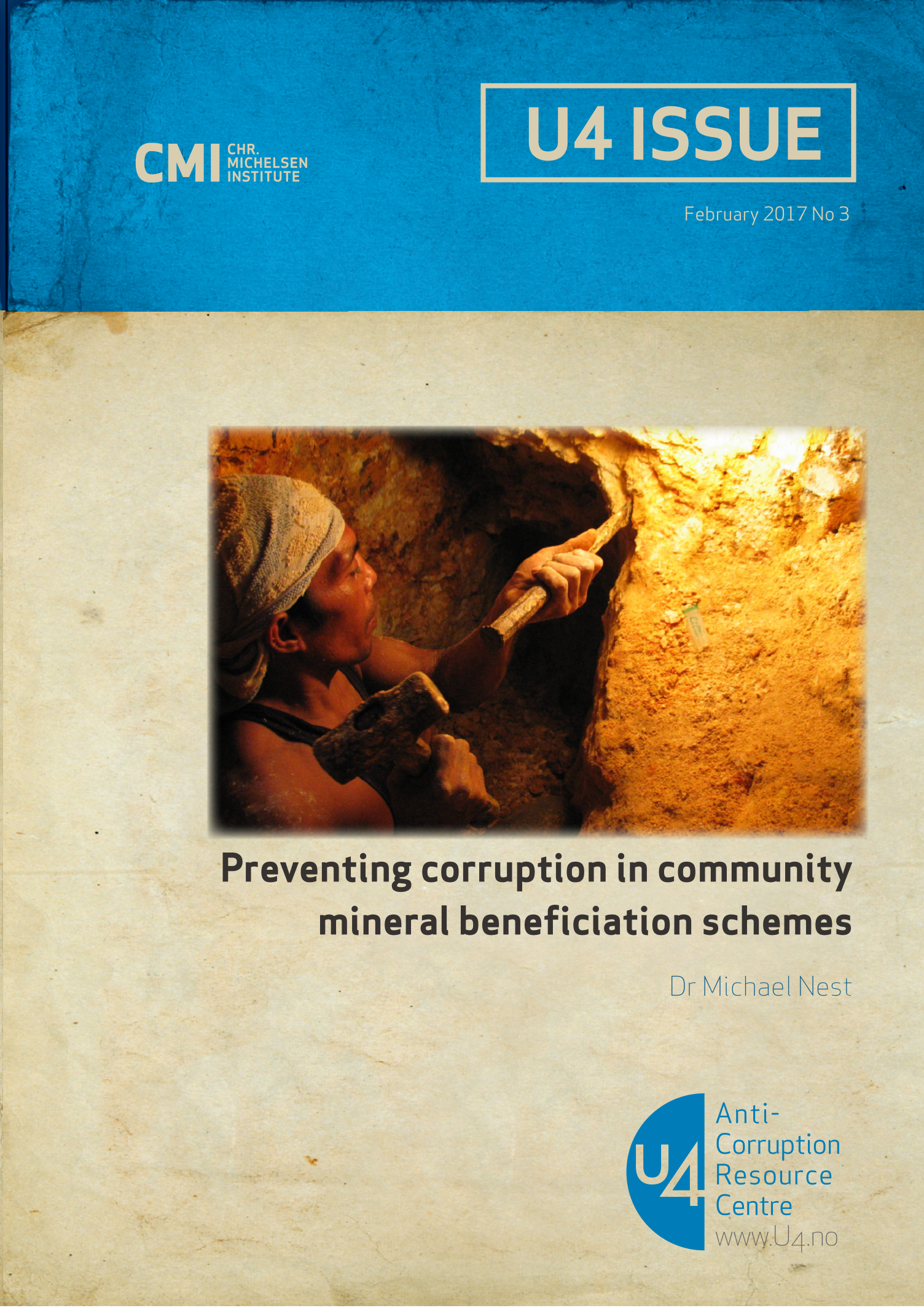U4 Issue
Preventing corruption in community mineral beneficiation schemes
Abstract
This paper analyses patterns of corruption and corruption risks related to community mineral beneficiation schemes (CMBSs) that distribute benefits funded by mineral revenues to communities. It analyses insights from existing scholarship on CMBSs, evidence from seven cases of corruption, and lessons from guidance documents on reducing corruption in the mining value chain. The aim of the paper is to stimulate debate and further research about the suitability of anti-corruption strategies for CMBSs. It argues a key flaw in these materials is that they lose sight of the fundamental purpose of CBMSs: local-level development controlled by the community. Existing work on corruption in CMBSs places too much emphasis on administrative measures to manage risks and prevent wrongdoing. A better approach is to first understand local political dynamics and ambitions for development, and then use these insights to improve CMBS design. The optimal mix of anti-corruption initiatives will flow from this work, including clarity about which measures are best controlled by which stakeholders. This paper makes 10 policy recommendations to improve CMBS design or reform CBMSs so they deliver benefits, enhance community control over development and better control corruption.
Approaches for donors in preventing corruption in community mineral beneficiation schemes
Community benefit schemes in the mining sector are vulnerable to corruption. Donors can help to mitigate these risks – and improve development outcomes for mining-affected local communities – in several ways:
- Research
Donors can encourage and work with mining operators to research local relationships with government authorities and mining companies and to map out local power dynamics. This research should entail surveying the development aspirations of both mining-affected communities and local government units. - Appropriate schemes
Donors can work with mining operators to determine if, in fact, a community benefit scheme is the best way to distribute mineral revenues, or if an alternative like cash transfers should instead be considered. - Flexible design
If a benefit scheme is established, donors can encourage mining operators to create a well-designed, properly documented and justified scheme that can be adjusted if problems arise but that also includes credible mechanisms to investigate and prosecute corrupt behavior. - Regular communication
Finally, donors can encourage mining operators to engage in continuous communication with beneficiary communities about the operation of a benefit sharing scheme to prevent information asymmetries that can facilitate corruption.

Cite this publication
Nest, M. (2017) Preventing corruption in community mineral beneficiation schemes. Bergen: Chr. Michelsen Institute (U4 Issue 2017:3) 40 p
Disclaimer
All views in this text are the author(s)’, and may differ from the U4 partner agencies’ policies.
This work is licenced under a Creative Commons Attribution-NonCommercial-NoDerivatives 4.0 International licence (CC BY-NC-ND 4.0)

